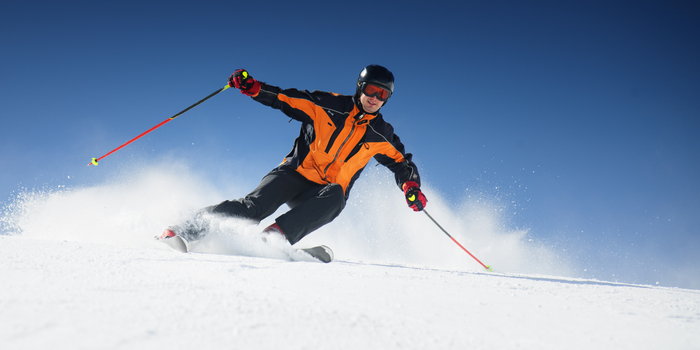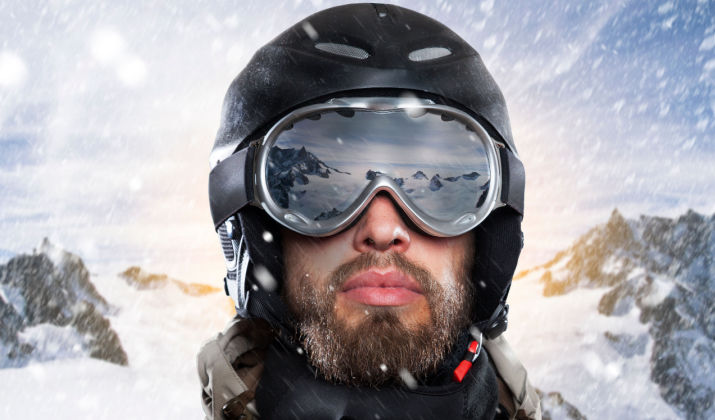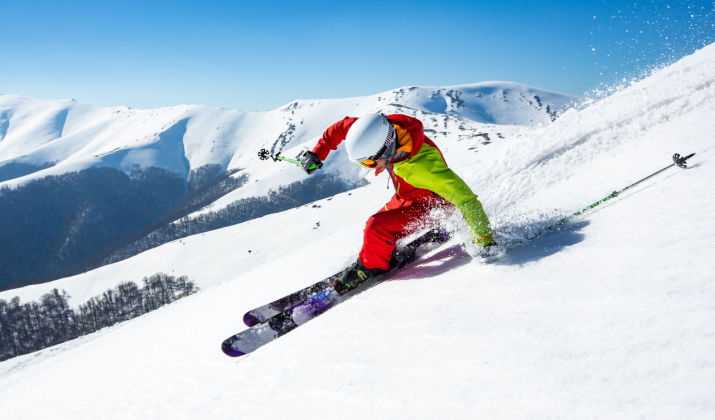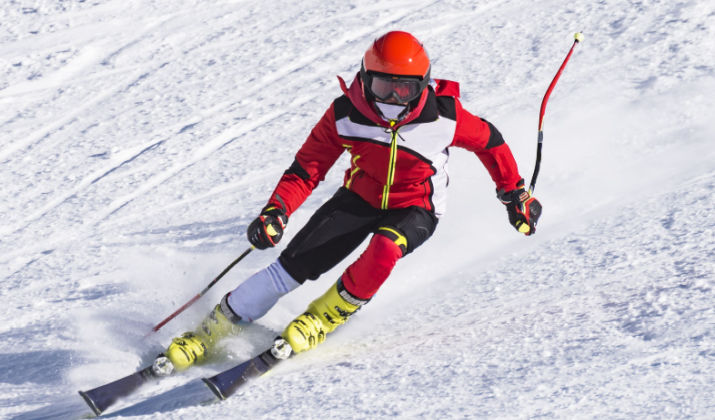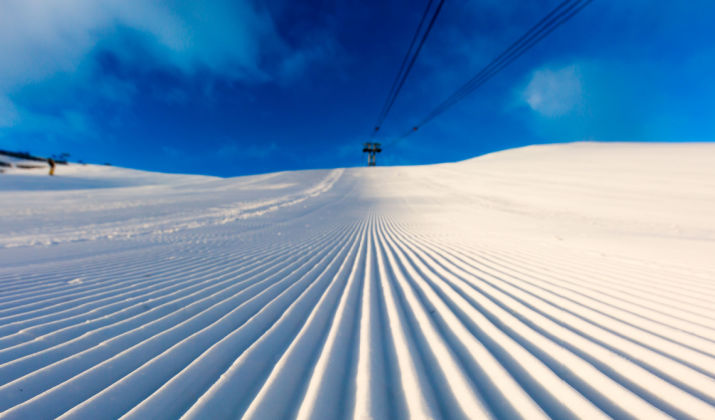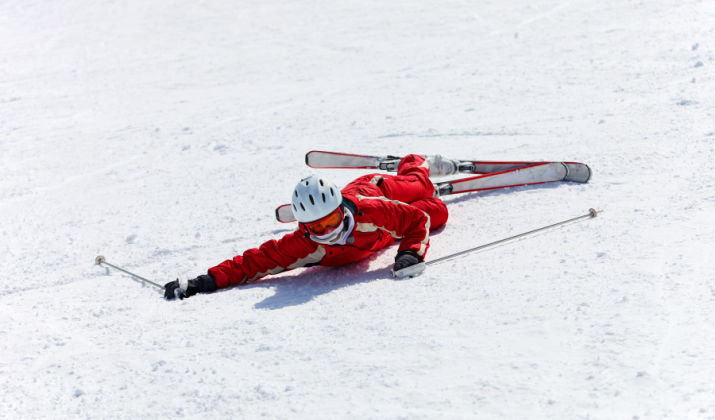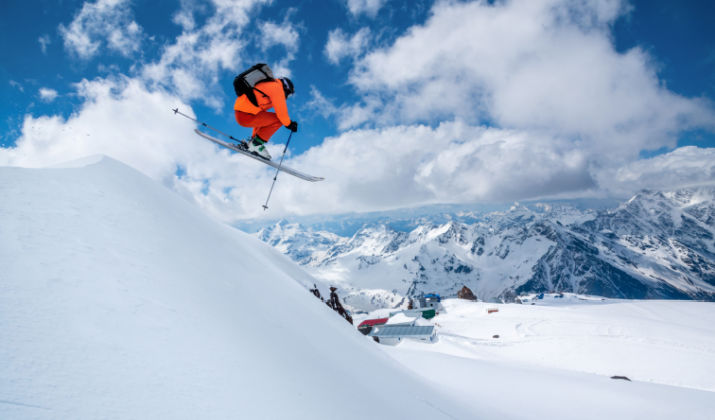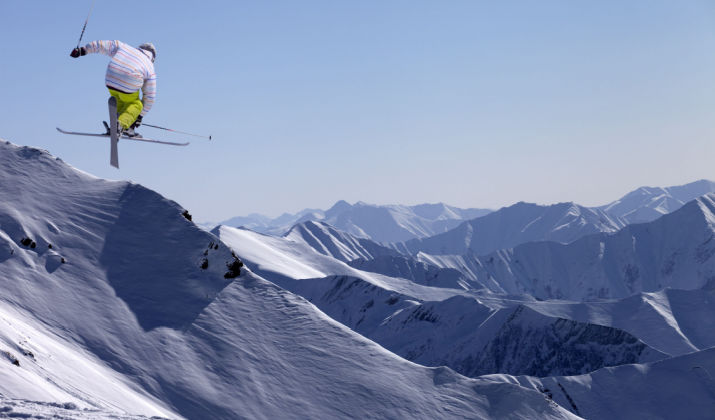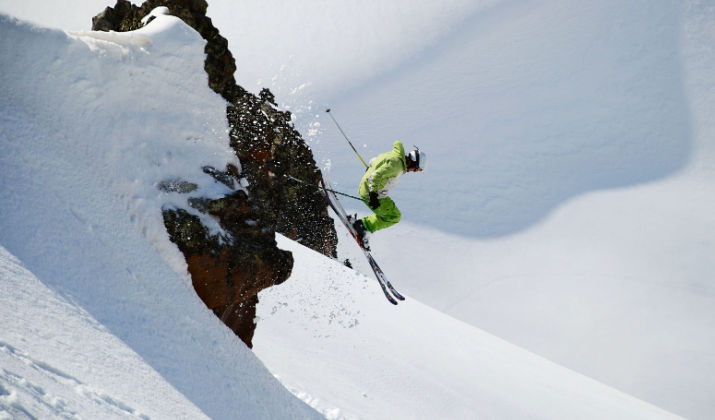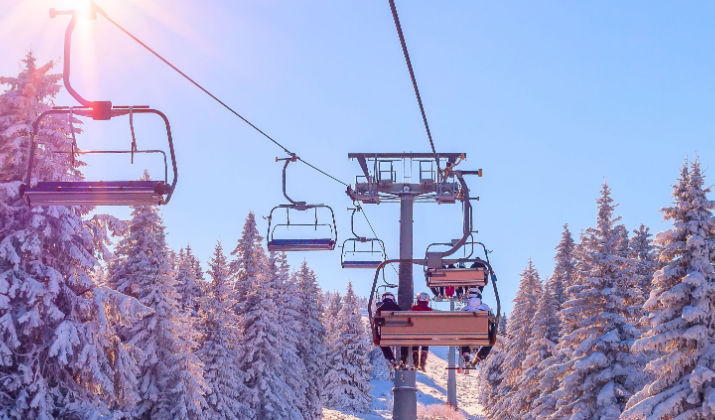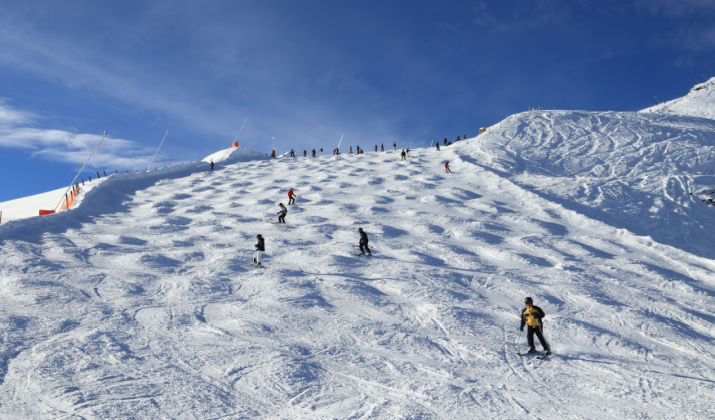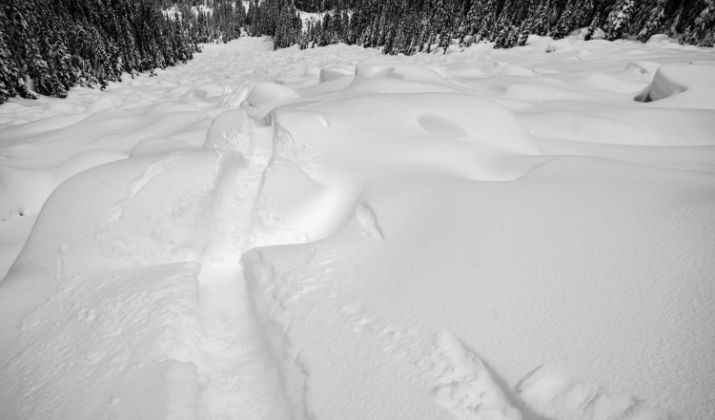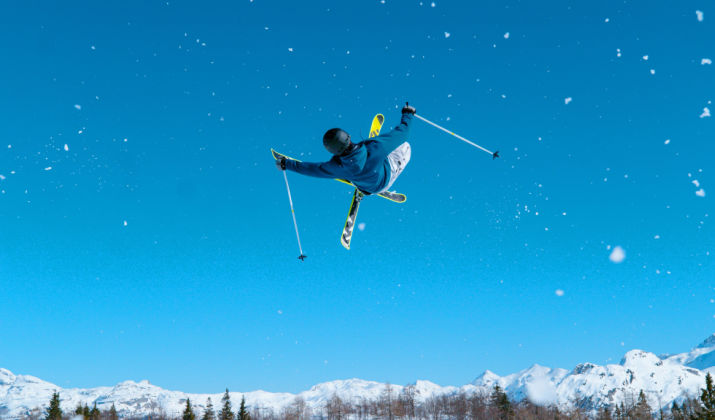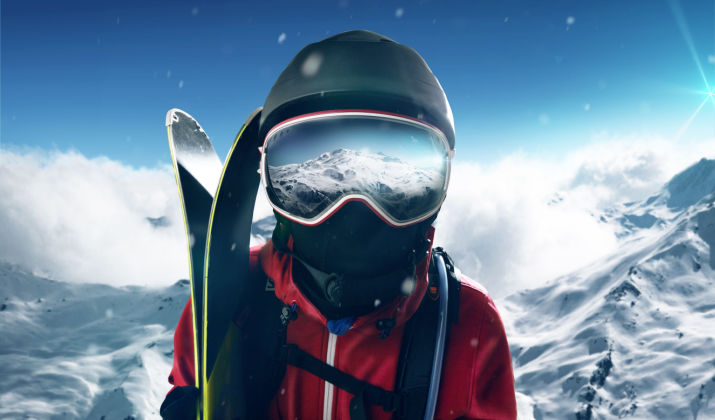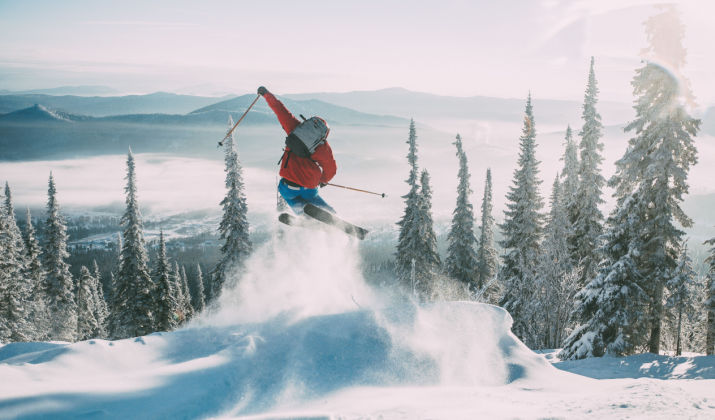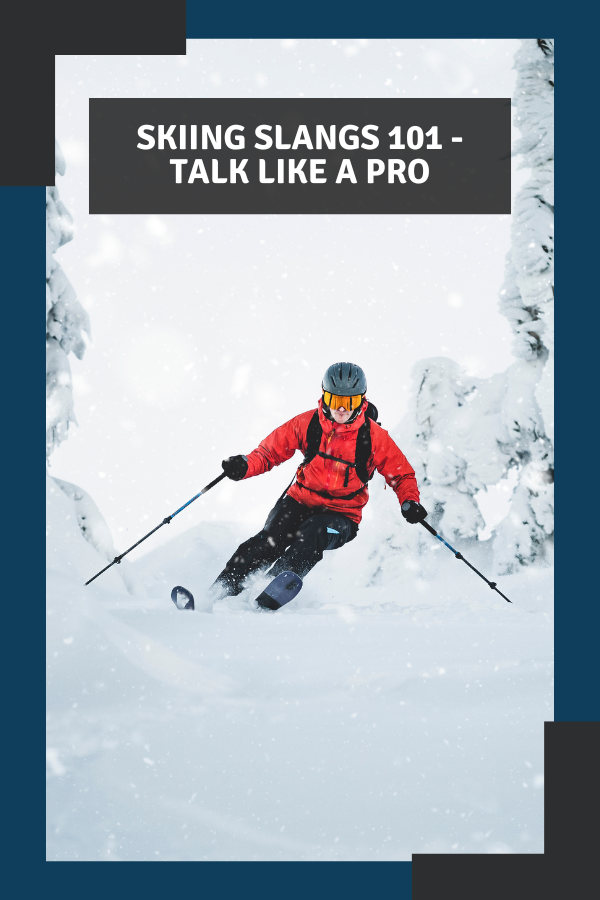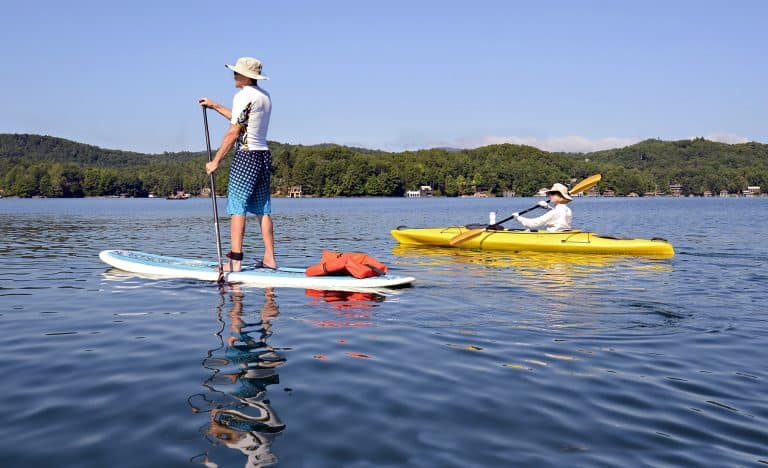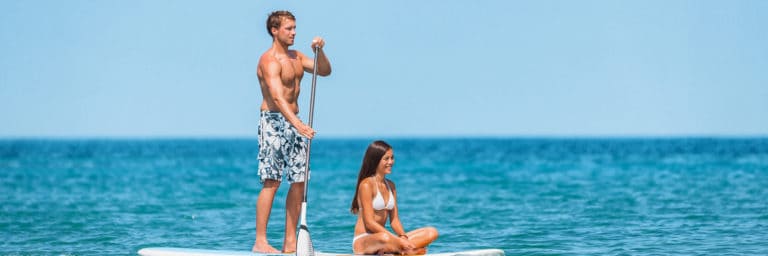Skiing is quite a complex sport with lots of jargon. Much of the jargon is associated with the equipment and techniques, but the lifestyle has produced many terms and slang words that can be confusing to the uninitiated.
Therefore, we have put together a list of common skiing slang words and terms. This will help you to understand what people in ski resorts are talking about and prepare you for a world of strange terminology.
Image Source: Shutterstock
Common Terms And Phrases Used By Skiers
Image Source: Shutterstock
1. Après-skiÂ
Après ski is a French term that directly translates to “after skiing.” It mainly consists of drinking in bars either on or off the slopes when you’ve finished skiing.
The Après ski scene is a big part of many ski resorts, particularly in Europe. It is seen as an opportunity to socialize and celebrate after a day on the slopes, usually dancing on tables.
2. Backcountry
Backcountry skiing takes place in unmarked, natural terrain away from ski resorts and groomed slopes. It involves skiing in deep snow, in remote areas not patrolled or maintained by ski resorts.
Skiing in the backcountry is pretty dangerous if you don’t know what you’re doing. So you need to know the dangers and how to avoid them.
3. BombingÂ
Skiing very fast down a slope, usually in a straight line. This is lots of fun, but you should only bomb when you are sure you won’t crash into someone or something.
Image Source: Shutterstock
4. Carving
Carving is a technique that involves tilting the skis onto their edges and allowing the skis to follow a curved path through the snow. This technique is super satisfying as it allows you to make smooth, flowing, stable, and controlled turns.
You’ll generally carve on groomed slopes, and it is a popular technique among advanced skiers. It is often used in racing, as you can ski much faster in control.
5. Cat trackÂ
A flat and narrow section of trail used to traverse across the mountain. Cat tracks are often easy green runs and allow skiers to get from one area of the mountain to another.
Sometimes cat tracks are shaped in a way that allows you to jump off them, which is lots of fun.
6. CorduroyÂ
Snow on a ski slope that has been groomed by a snowcat or other grooming machine. The term “corduroy” refers to the parallel ridges left in the snow by the grooming machine, which resemble the ridges on a corduroy fabric.
Image Source: Shutterstock
Corduroy snow is smooth, even, and firm, making it easier for skiers to maintain control and carve turns. You get corduroy snow in the early morning after the machines have groomed the snow overnight.
7. Crud
Crud is a term that describes challenging snow conditions to ski through. Snow usually gets cruddy in the late afternoon or after a recent snowfall. Crud is uneven, bumpy, and variable snow, which can be challenging to navigate and may cause skiers to lose control or take unexpected falls.
8. Face shot
When skiing in deep powder where the snow is so deep, it flies up and covers your face. This occurs when you make hard turns in deep snow, throwing the snow into the air and creating a cloud of snow that engulfs you.
9. Faceplant
A faceplant when a skier falls forward onto their face. It can happen when you lose your balance, hit an obstacle, or misjudge a turn, causing you to fall forward instead of to the side or backward.
Image Source: Shutterstock
Face plants can be nasty, as you can hit the ground with significant force and may injure your face, nose, or mouth. Skiers need to wear a helmet and other protective gear to minimize the risk of injury.
10. Fat skis
Fat skis are designed to perform well in deep powder snow. They are wider than traditional skis, typically 100mm or more underfoot. Which provides greater surface area for flotation and stability in soft snow.
Fat skis also typically have a rockered profile, meaning the ski has an upward curve at the tip and tail, helping them to float on top of the snow and make turns easier. They are often used in backcountry skiing and off-piste skiing, where deep powder snow is common.
11. FlexÂ
Flex refers to how easily a ski bends when weight is applied to it. Ski flex is determined by a combination of factors, including the ski’s length, width, and construction materials.
Ski flex plays a vital role in how a ski performs. A stiffer ski will be more stable at high speeds and provide better edge grip on hard snow, making it a good choice for aggressive and fast skiers. The downside of a stiffer ski is that it is less forgiving and more difficult to turn at lower speeds.
On the other hand, a softer flexing ski is more forgiving and easier to turn at slower speeds. This makes it a good choice for beginners or skiers who prefer a more relaxed style. However, a softer ski may be less stable at high speeds and provide less edge grip.
The flex of a ski can also affect its performance in different snow conditions. A stiffer ski may perform better in hard-packed snow, while a softer ski may be more suitable for powder snow.
12. FreerideÂ
Freeride skiing involves skiing off-piste or off the marked ski runs. This means skiing on unmarked, ungroomed, and often challenging terrain, such as steep slopes, deep snow, trees, and other natural features. The goal of freeride skiing is to experience the thrill of skiing in the backcountry, away from the crowds, and the safety of the marked ski runs.
Image Source: Shutterstock
Freeride skiing is a highly specialized and skilled form of skiing, requiring a high level of technical ability, experience, and knowledge of the mountain environment. It is often considered a more dangerous form of skiing than traditional alpine skiing, as there is a higher risk of avalanches, falls, and other hazards associated with skiing in the backcountry. However, for experienced and prepared people, freeride skiing can be an exhilarating and rewarding way to explore the mountain landscape.
13. Freestyle
Freestyle skiing involves performing tricks, jumps, and maneuvers on a variety of terrain. It is a highly acrobatic and athletic sport that requires a high level of technical skill, strength, and agility.
Freestyle skiing includes several different disciplines, including:
- Moguls skiing involves skiing down a steep course covered with a series of bumps or moguls. Skiers are judged on their speed, technique, and ability to navigate the moguls while performing aerial tricks.
- Aerial skiing involves skiing off a jump and performing aerial tricks, such as flips and twists, before landing on a downhill slope.
- Slopestyle skiing is skiing down a slope featuring a series of obstacles, such as rails, jumps, and boxes. Skiers are judged on their creativity, style, and technical ability.
- Halfpipe skiing involves skiing on a U-shaped course with steep walls on either side. Skiers are judged on their ability to perform tricks while moving up and down the walls of the halfpipe.
Image Source: Shutterstock
14. Freshies
Newly fallen snow that other skiers have not yet tracked out. Fresh powder snow provides a unique and exciting skiing experience, as the skier can float on top of the snow and make smooth, flowing turns.
To ski freshies, skiers typically use fat skis with a rockered profile. Skiers also need to adjust their technique to accommodate the deeper snow, such as shifting their weight back to keep their skis from sinking into the snow.
15. Gaper
A derogatory term used to describe a skier or snowboarder who displays a lack of skill or knowledge and stands out in a negative way. The term comes from the huge gap that can form between a skier’s helmet and goggles. This commonly indicates that the skier is inexperienced, poorly equipped, or has no style.
You will often see gapers wearing outdated or inappropriate clothing, skiing recklessly or without proper control, being overly cautious or timid on the slopes, or showing a lack of knowledge about skiing etiquette or staying safe.
Other words for gaper include Jerry, Joey, or Gorb.
16. Gnarly
Gnarly skiing typically involves steep, technical terrain, deep powder snow, or other challenging conditions that require advanced skiing skills and experience to navigate safely.
Image Source: Shutterstock
Skiers who seek out gnarly skiing often enjoy the adrenaline rush and sense of accomplishment that comes from conquering rugged terrain or conditions.
Some examples of gnarly skiing may include steep couloirs, narrow chutes, rocky terrain, cliff drops, or deep powder snow with variable conditions.
17. Goggle tan
A tan line formed from wearing ski goggles on the mountain. Some skiers and snowboarders take pride in their goggle tans as a sign of their time spent on the slopes. However, other skiers and snowboarders try to avoid them by wearing sunscreen.
18. Hockey stop
A hockey stop is a technique skiers use to quickly and effectively stop or change direction on the slopes. The move is named after a similar move used in ice hockey to stop or turn quickly.
19. Huck
A term used to describe a jump or drop off a large or steep feature, such as a ramp, cliff, or cornice. The term can also refer to the process of jumping off a big feature.
Hucking is typically associated with freestyle and backcountry skiing and requires a high level of skill and experience to perform safely.
20. Jibbing
Jibbing is a style of freestyle skiing that involves performing tricks and maneuvers on various features such as rails, boxes, walls, and other artificial or natural features found on the mountain. The term “jib” comes from snowboarder slang and refers to sliding, grinding, or balancing on a feature.
Jibbing involves a combination of technical skill, creativity, and style. Skiers who love jibbing use shorter, wider skis for greater maneuverability and stability on features.
21. Lifty
A slang term for a lift operator responsible for operating and maintaining ski lifts at a resort. Lifties help in the safety and efficiency of the ski lift system. They are often the first point of contact for skiers and snowboarders at the resort.
Image Source: Shutterstock
Lifties work in all weather conditions and are responsible for skiers getting on and off the lifts, performing safety checks, and routine maintenance.
22. Line
The path or route a skier takes down a run or slope. A ski line can vary depending on several factors, including the skier’s skill level, snow conditions, terrain features, and personal preferences.
Experienced skiers often spend time scouting a run before dropping into their line. A good ski line will typically follow the slope’s fall line, maximizing the skier’s speed and momentum while allowing for safe and controlled turns.
23. Moguls
Moguls are a series of bumps or mounds that form on ski runs, particularly on steep or heavily skied terrain. Moguls are typically created by skiers carving turns into the snow, which can cause the snow to become packed and uneven over time.
Moguls can vary in size and spacing and can be challenging for skiers to navigate due to their uneven and unpredictable nature. Larger moguls form on busy slopes and when the snow is soft or slushy.
Advanced skiers choose to ski through moguls to test their technical ability and improve their overall skiing skills.
Image Source: Shutterstock
24. Off-pisteÂ
Off-piste skiing is when you ski away from the marked or groomed runs within a ski resort. This can include skiing in backcountry terrain, off the beaten path, or in ungroomed areas outside the resort boundaries.
Off-piste skiing offers a more natural and adventurous experience than skiing in the resort but carries more significant risks. Skiers who venture off-piste must be prepared for challenging terrain, deep snow, and potential hazards such as avalanches, tree wells, and hidden obstacles.
25. On-piste
Skiing on groomed trails or runs within a ski resort. These runs are typically marked and maintained by ski resort staff. They are designed to provide a safe and enjoyable skiing experience for skiers of all abilities.
On-piste slopes are color-coded, so you know how difficult they are. This is so you can choose one to suit your skill level.
On-piste skiing can include a variety of terrain, from gentle beginner slopes to steep and challenging runs for advanced skiers. The runs are typically well-groomed with machine-made snow, which creates a consistent and predictable surface for skiing.
26. Pillow line
A pillow line is a series of natural snow formations that resemble pillows or cushions. These formations are usually created by significant snow accumulations on rocks, trees, or other natural features.
Image Source: Shutterstock
Pillow lines are popular with very advanced skiers and snowboarders, as they are fun but extremely challenging to navigate. Skiing through a pillow line requires precise control and balance, as the skier must navigate around the snow formations and adjust their speed and direction to avoid obstacles.
27. Ripper
Highly skilled and aggressive skier known for skiing fast and aggressively, and who is also extremely good at what they do. Rippers are often considered experts and can handle a wide range of terrain, including steep, challenging runs, moguls, and off-piste terrain.
Rippers are typically characterized by their smooth and efficient technique, ability to make quick turns and adjustments naturally, and fearless approach to gnarly terrain. They are often admired and respected by other skiers for their skill and ability to easily tackle challenging terrain.
Image Source: Shutterstock
28. Schuss
A schuss is a downhill skiing technique where the skier goes straight down the fall line at high speed (see bombing), with their skis parallel to each other and their weight centered over the skis. The term “schuss” comes from the German word for “shot” or “rush,” and it is often used to describe a fast, aggressive descent.
The schuss is typically used on steep sections of a ski run or on groomed slopes where the snow is firm and fast. Skiers often schuss to build up speed before a jump or gain momentum for a tricky section of the run. It requires a lot of skill and control, as the skier must maintain balance and direction while traveling at high speeds.
29. Shredding
Shredding is a term used in skiing to describe a style of skiing characterized by aggressive, high-speed turns and tricks. The term is often associated with freestyle skiing and snowboarding, where skiers and snowboarders use the terrain and features of the mountain to perform tricks and stunts.
However, some skiers and snowboarders use it to simply describe going on the mountain.
30. Sidecountry
Sidecountry is the terrain outside the ski resort’s boundaries. However, it is still accessible from the resort’s lifts and groomed slopes.
Sidecountry terrain is often adjacent to the ski resort’s designated ski runs. It can include steep chutes, open bowls, and backcountry-style terrain.
31. Ski bum
A ski bum spends a significant amount of time skiing or snowboarding while often ignoring responsibilities. Ski bums are typically characterized by their love of the sport, commitment to the lifestyle, and willingness to live frugally and work seasonal jobs to support their skiing habit.
Ski bums are often young people who are passionate about skiing or snowboarding and are willing to prioritize the sport over other obligations like school or work. They may live in ski towns or near ski resorts and work in jobs like ski instructing, lift operation, or restaurant service to support their skiing lifestyle.
While the term “ski bum” can sometimes carry negative connotations of laziness or aimlessness, many ski bums see themselves as living a fulfilling and meaningful life centered around their love of skiing. For some, it’s a temporary lifestyle choice, while for others, it’s a long-term commitment.
Image Source: Shutterstock
32. Ski-in, ski-out
A type of accommodation located directly on or next to a ski slope, allowing skiers to easily access the slopes without traveling far or using transportation. The term “ski in ski out” implies that a skier can ski directly from their accommodation to the slopes, and back again at the end of the day, without having to take off their skis or use a shuttle or other transportation.
Ski-in ski-out accommodations can include hotels, lodges, condos, and other types of lodging located slope-side or close to the ski runs. Ski-in-ski-out resorts may also have amenities like ski lockers, hot tubs, and restaurants or bars conveniently located for skiers.
33. Ski Patrol
Ski patrol is a group of trained individuals responsible for promoting safety on ski slopes and providing medical assistance and rescue services in the event of an accident or emergency. Ski patrol teams can be found at most ski resorts around the world. They are critical for the safety and well-being of skiers and snowboarders.
The duties of ski patrol can include:
- Conducting regular safety checks on the slopes to ensure that trails are adequately marked and maintained and hazards like rocks, stumps, and ice are clearly identified.
- Providing first aid and emergency medical care to injured skiers and snowboarders on the slopes.
- Conducting search and rescue operations for lost or injured skiers and snowboarders.
- Conducting avalanche control operations to mitigate the risk of avalanches and ensure the safety of slope users
- Monitoring and enforcing safety rules on the slopes, such as speed limits and equipment requirements.
Final Thoughts
Image Source: Shutterstock
These are just a few examples of slang words and terminology used in skiing. However, this list should give you a good start enabling you to communicate with skiers and give you a better understanding of the sport.
As you spend more time in ski resorts and with skiers, you will learn many more phrases and feel more comfortable within the skiing community.

